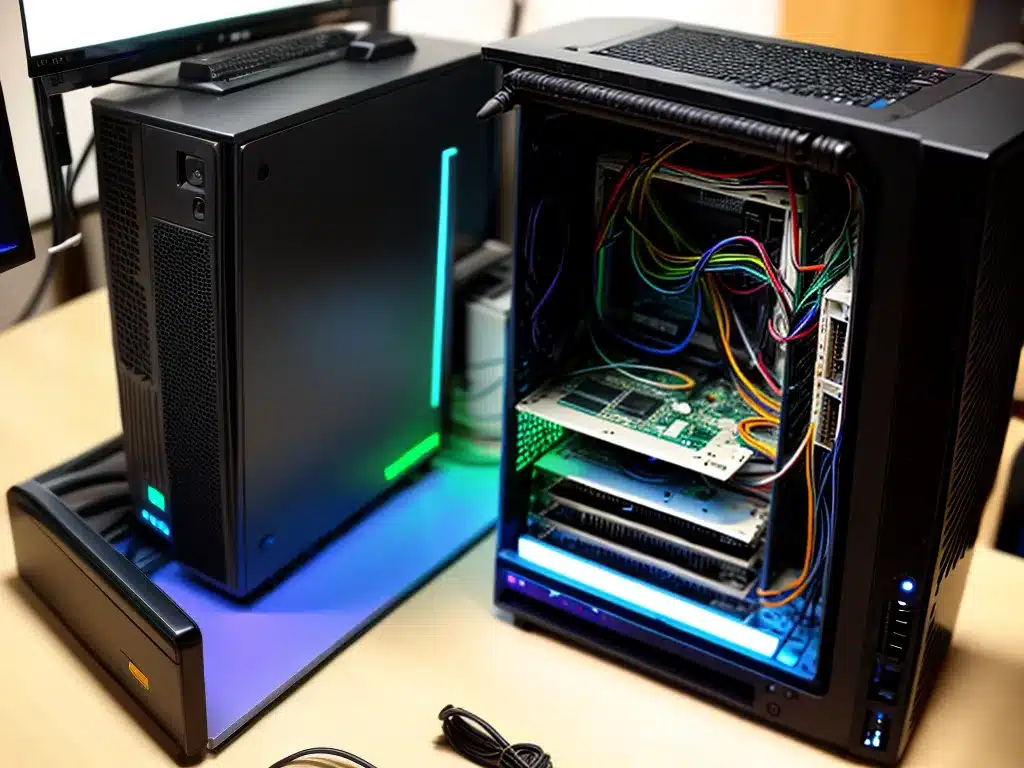Introduction
Upgrading and repairing an old desktop PC can breathe new life into an aging machine. With a few strategic component swaps and repairs, you can give that faithful old desktop a performance boost and extend its usable lifespan by a few more years. In this article, I will share my experiences revitalizing an old PC and provide tips on determining which upgrades to tackle.
Assess the Current State of the PC
The first step is taking stock of what you currently have. Here are some key things to check:
-
Specifications – Note the make and model, processor, RAM, hard drive, video card, etc. This gives you a baseline to work from.
-
Operating System – Is the OS outdated? Can it handle newer hardware? Knowing the OS limits helps guide upgrades.
-
Performance – Benchmark the PC’s current capabilities. This quantifies areas needing improvement.
-
Failed or Failing Components – Inspect inside the case for any obviously faulty parts. This influences what needs replacing.
-
Power Supply – Verify the wattage and connectors are sufficient for future upgrades. An underpowered PSU will bottleneck.
-
Budget – Set a budget for how much you can reasonably spend on upgrades. Budget focuses the upgrade strategy.
Prioritize Upgrades Based on Usage
Tailor upgrades to match how you use the computer. Common scenarios include:
General Use
If primarily web browsing, email, and office work, focus on RAM, storage, and OS upgrades.
Gaming
For gaming, look at video card, processor, RAM, and power supply upgrades.
Media/Entertainment
For heavy media usage, CPU, RAM, storage, and potentially sound cards are key.
Each scenario values certain components over others. Identify your main usage patterns and concentrate there.
Renew Key Components
Some components give the most bang for the buck. Here are my top picks:
RAM
Maxing out RAM dramatically improves general performance. Match RAM types and increase up to the motherboard’s limit.
Solid State Drive (SSD)
Replacing a hard disk drive (HDD) with an SSD provides a huge speed boost. Use for boot drive and core programs.
Video Card
Upgrading the video card ramps up gaming performance substantially. Look for cards compatible with your motherboard.
Processor
A newer CPU speeds up intensive tasks like media projects. Verify socket type before purchasing.
Operating System
A fresh OS install revives old hardware. Check for OS support before upgrading components.
Breathe New Life with Repairs
Along with upgrades, common repairs can restore and extend usability:
-
Thermal Paste – Reapply thermal paste between the CPU and heat sink to prevent overheating.
-
Fans and Cooling – Clean clogged fans, vents, and heat sinks. Replace worn out fans if needed. Proper cooling prevents damage.
-
Cables and Connections – Check for loose cables. Reseat RAM and expansion cards to fix loose connections.
-
Battery – If the BIOS clock resets, replace the CMOS battery. A new battery costs a few dollars.
-
Mechanical Hard Drives – If an HDD is noisy or not spinning up, mechanical failure is likely. Consider replacing it with an SSD.
Conclusion
With a bit of targeted upgrading and some elbow grease on repairs, that old desktop can be up and running smoothly again. The process allows you to maximize its existing value and delay purchasing a brand new computer. Just be sure to realistically assess its capabilities and only put in the effort warranted by the machine’s worth. With the right enhancements, you can get those extra good years out of your trusty old PC.













